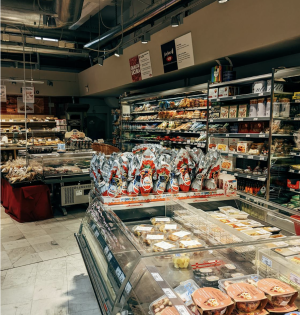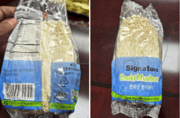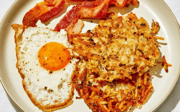Big changes to SNAP could reshape grocery shopping across America
By
Veronica E.
- Replies 12
Grocery shopping is something many of us do without much thought—but that routine is about to get more complicated.
A sweeping set of changes to the Supplemental Nutrition Assistance Program (SNAP) could affect what shoppers can buy, who qualifies for help, and how grocery stores operate.
These changes come from a new federal law and new waivers granted to individual states.
Grocers, especially in rural and low-income areas, are bracing for economic ripple effects.
And for millions of households that rely on food assistance, the impact may soon be felt in their grocery carts.

New legislation slashes SNAP benefits
The One Big Beautiful Bill Act, recently signed into law by President Donald Trump, cuts $186 billion from SNAP over the next 10 years.
According to the National Grocers Association (NGA), most of these cuts stem from tighter eligibility rules expected to reduce the number of people receiving food assistance.
Key changes include:
“The biggest change in SNAP is attempting to reduce the number of people who qualify,” said John Ross, CEO of the Independent Grocers Alliance.
Also read: Lawsuit filed against Trump Administration over SNAP benefit changes
Grocers brace for declining sales
With fewer consumers expected to qualify for SNAP, grocers are preparing for an average 6.7% drop in sales over the next six months, according to the NGA.
While SNAP makes up about 12% of grocery sales overall, some stores—especially those in low-income or rural areas—rely on it for more than 60% of their business.
“In some communities in Maryland where there are underserved populations, you're talking about major amounts of money that are theoretically being supplemented by these benefit programs [like SNAP],” said Cailey Locklair, president of the Maryland Retailers Alliance.
“When you take one of those stores in rural Georgia, for example, where they're the only grocery store for 60 miles, [when] that store fails, there's nothing left except the convenience store,” Ross said.
“And what happens in a community where you do not have a grocery store that sells fresh meat and fresh produce is the incidence of heart disease, hypertension, obesity, childhood obesity—they all go way above the norm.”
Also read: New SNAP restrictions? Some groceries could soon be off-limits with food benefits
State waivers bring new product restrictions
In addition to federal cuts, the USDA has started granting state waivers to restrict SNAP purchases of specific items like candy and soda.
While previous administrations had rejected such waivers on a bipartisan basis, six states have now received approval, and others—including West Virginia, Kansas, Louisiana, Colorado, and Texas—are seeking them.
“There are a lot of concerns about folks moving across state lines [to shop], especially if you're in a city like Kansas City, where the city is basically on the border and you can just go across the river to get your groceries,” Johnson said.
“In Indiana, it's an hour's drive to the border from anywhere in the state,” said Joseph Lackey, president of the Indiana Grocery & Convenience Store Association.
“[That] could incentivize consumers to drive to neighboring states to do their grocery shopping.”
“[Standardized exclusions] would also make it a lot easier instead of people being mad at Indiana and going to Illinois to buy their stuff,” Lackey added.
Also read: SNAP benefits hit by massive scam surge—are your funds at risk?
Retailers face operational headaches
For store owners, the new rules bring logistical and financial challenges.
They’ll need to reprogram checkout systems, retrain employees, and explain to customers why their favorite snacks are no longer covered.
“Okay, Little Debbie cakes are out. What about Kind bars? What about a Nature Valley bar—[which still has] a lot of sugar in it. Is it going to qualify or not?” Ross said.
“So now all of a sudden, you're having to make judgments at this SKU level about what qualifies or not.”
“Our associates are going to be the ones that are going to have to explain [to customers about the newly ineligible items], and they're also going to be the ones that are going to take the abuse from the customers who say, ‘What do you mean I can't buy soft drinks? What do you mean I can't buy candy?’” said Lackey.
Also read: Could a SNAP benefits error cost your state millions? Here’s what taxpayers need to know
A chance for grocers to step up
Despite the challenges, grocers may find opportunity in the disruption.
Programs like Double Up Food Bucks and Healthy Fluid Milk Incentives are already helping SNAP shoppers stretch their dollars and eat healthier.
Produce prescriptions and other medically tailored food programs are also expanding.
Grocers can tell consumers that “if you take the same meal from a Chipotle or from an Olive Garden, and you cook the same ingredients in your house, it's a third the price per serving and it's half the sodium and half the calories,” Ross said.
“Grocery stores are a great place to employ retirees that want a part-time job. … That could be a real opportunity for us to bring a very stable and predictable and great customer service demographic back into retail that we lost during COVID,” Ross said.
Independents, Ross suggested, can position hiring as “Let's protect your SNAP benefits and we'll give you a 20-hour week job dealing with people having fun talking about food.”
Whether you’re a shopper, store employee, or business owner, these changes are likely to affect you.
You may notice different rules at checkout, see new offerings from your neighborhood store, or watch as familiar faces return to the workforce.
Read next: SNAP benefits just expanded in these two states—Find out if you qualify!

Have you noticed changes at your local grocery store? Are you adapting your shopping or budgeting habits? Let us know in the comments — because navigating these shifts is something we’re all in together.
A sweeping set of changes to the Supplemental Nutrition Assistance Program (SNAP) could affect what shoppers can buy, who qualifies for help, and how grocery stores operate.
These changes come from a new federal law and new waivers granted to individual states.
Grocers, especially in rural and low-income areas, are bracing for economic ripple effects.
And for millions of households that rely on food assistance, the impact may soon be felt in their grocery carts.

Grocers across the country are preparing for major changes to SNAP that could impact both shoppers and store operations. Image Source: Pexels / Markus Winkler.
New legislation slashes SNAP benefits
The One Big Beautiful Bill Act, recently signed into law by President Donald Trump, cuts $186 billion from SNAP over the next 10 years.
According to the National Grocers Association (NGA), most of these cuts stem from tighter eligibility rules expected to reduce the number of people receiving food assistance.
Key changes include:
- Expanding work requirements for recipients under age 65 and for parents with children as young as 14
- SNAP eligibility limited to US citizens and lawful permanent residents—excluding refugees and asylum seekers
- Elimination of the SNAP-Ed program, which previously helped consumers make healthier food choices
- A new rule requiring states to cover 75% of SNAP administrative costs by 2027
- Beginning in 2028, states with high error rates in benefit distribution will also have to pay a share of benefit costs
“The biggest change in SNAP is attempting to reduce the number of people who qualify,” said John Ross, CEO of the Independent Grocers Alliance.
Also read: Lawsuit filed against Trump Administration over SNAP benefit changes
Grocers brace for declining sales
With fewer consumers expected to qualify for SNAP, grocers are preparing for an average 6.7% drop in sales over the next six months, according to the NGA.
While SNAP makes up about 12% of grocery sales overall, some stores—especially those in low-income or rural areas—rely on it for more than 60% of their business.
“In some communities in Maryland where there are underserved populations, you're talking about major amounts of money that are theoretically being supplemented by these benefit programs [like SNAP],” said Cailey Locklair, president of the Maryland Retailers Alliance.
“When you take one of those stores in rural Georgia, for example, where they're the only grocery store for 60 miles, [when] that store fails, there's nothing left except the convenience store,” Ross said.
“And what happens in a community where you do not have a grocery store that sells fresh meat and fresh produce is the incidence of heart disease, hypertension, obesity, childhood obesity—they all go way above the norm.”
Also read: New SNAP restrictions? Some groceries could soon be off-limits with food benefits
State waivers bring new product restrictions
In addition to federal cuts, the USDA has started granting state waivers to restrict SNAP purchases of specific items like candy and soda.
While previous administrations had rejected such waivers on a bipartisan basis, six states have now received approval, and others—including West Virginia, Kansas, Louisiana, Colorado, and Texas—are seeking them.
“There are a lot of concerns about folks moving across state lines [to shop], especially if you're in a city like Kansas City, where the city is basically on the border and you can just go across the river to get your groceries,” Johnson said.
“In Indiana, it's an hour's drive to the border from anywhere in the state,” said Joseph Lackey, president of the Indiana Grocery & Convenience Store Association.
“[That] could incentivize consumers to drive to neighboring states to do their grocery shopping.”
“[Standardized exclusions] would also make it a lot easier instead of people being mad at Indiana and going to Illinois to buy their stuff,” Lackey added.
Also read: SNAP benefits hit by massive scam surge—are your funds at risk?
Retailers face operational headaches
For store owners, the new rules bring logistical and financial challenges.
They’ll need to reprogram checkout systems, retrain employees, and explain to customers why their favorite snacks are no longer covered.
“Okay, Little Debbie cakes are out. What about Kind bars? What about a Nature Valley bar—[which still has] a lot of sugar in it. Is it going to qualify or not?” Ross said.
“So now all of a sudden, you're having to make judgments at this SKU level about what qualifies or not.”
“Our associates are going to be the ones that are going to have to explain [to customers about the newly ineligible items], and they're also going to be the ones that are going to take the abuse from the customers who say, ‘What do you mean I can't buy soft drinks? What do you mean I can't buy candy?’” said Lackey.
Also read: Could a SNAP benefits error cost your state millions? Here’s what taxpayers need to know
A chance for grocers to step up
Despite the challenges, grocers may find opportunity in the disruption.
Programs like Double Up Food Bucks and Healthy Fluid Milk Incentives are already helping SNAP shoppers stretch their dollars and eat healthier.
Produce prescriptions and other medically tailored food programs are also expanding.
Grocers can tell consumers that “if you take the same meal from a Chipotle or from an Olive Garden, and you cook the same ingredients in your house, it's a third the price per serving and it's half the sodium and half the calories,” Ross said.
“Grocery stores are a great place to employ retirees that want a part-time job. … That could be a real opportunity for us to bring a very stable and predictable and great customer service demographic back into retail that we lost during COVID,” Ross said.
Independents, Ross suggested, can position hiring as “Let's protect your SNAP benefits and we'll give you a 20-hour week job dealing with people having fun talking about food.”
Whether you’re a shopper, store employee, or business owner, these changes are likely to affect you.
You may notice different rules at checkout, see new offerings from your neighborhood store, or watch as familiar faces return to the workforce.
Read next: SNAP benefits just expanded in these two states—Find out if you qualify!
Key Takeaways
- The One Big Beautiful Bill Act cuts $186 billion from SNAP over 10 years, largely through tighter eligibility rules and state-level cost shifts.
- New USDA-approved state waivers allow restrictions on SNAP purchases of items like soda and candy, creating inconsistent rules across state lines.
- Grocers expect an average 6.7% drop in sales as SNAP participation declines, especially in rural and underserved areas.
- Retailers may fill the education gap left by SNAP-Ed by offering healthy meal tips, loyalty programs, and flexible job opportunities for retirees.
Have you noticed changes at your local grocery store? Are you adapting your shopping or budgeting habits? Let us know in the comments — because navigating these shifts is something we’re all in together.






